Content
Concentrated thinking is one of the best ways to make an informed decision. But it is not always possible due to distractions. It is best to think about something surrounded by greenery or by a pond or stream. You can create such an individual corner for yourself by building an artificial reservoir in the country. He will always delight the eyes of your family. There are several options for how it can be built and what materials to use for this. In fact, it can be much cheaper than it seems offhand.
Choosing a place
Having a small body of water near your own home is not native to the people. Rather, it was borrowed from the neighbors. Muslims and Chinese have long known the benefits of meditating and observing near a body of water. The former preferred to have fountains and small ponds of regular shape in their closed yards. Most often, a circle or oval was chosen for the reservoir. And they placed the reservoir in a place that was always in sight. Eastern sages preferred not to violate the harmony of nature, therefore they repeated its lines and did not accept artificial contours. Chinese parks resemble pristine but well-groomed nature.
The reservoirs that were located in such gardens could hardly be called small. In some cases, it was easy to navigate the water by boat. An obligatory attribute, which was located above the water, was a small arch-shaped bridge, which was entangled by various plants. There are also bodies of water in Japanese traditions. Those who have been to Japan at least once may have wondered at the size of housing and other premises. This nationality has always gravitated towards minimalism. Therefore, water bodies and various ponds reflect this feature. They are small but sophisticated and memorable.
To set the right mood for a pond in the country, you need to think about where and how it will be located. To do this, you need to take a tool in which you are used to writing down your ideas or thoughts and write down a few points:
- which side of the yard is the sun mostly on during the day;
- is there a site without trees;
- what area is available for the reservoir;
- will there be fish in the pond;
- what kind of vegetation would be good to put in the pond;
- is it planned to expand the reservoir in the future;
- is it possible to supply electricity to the pond;
- whether a recreation area is planned near the reservoir.
Light is good and should be enough, but not too much by the pond. The body of water is a great place for algae to grow and develop. They make a positive contribution to the overall ecosystem of the reservoir, but when there are too many of them, then the water will contain less oxygen, and this will have a negative effect, for example, on fish. It is also not very pleasant to contemplate the green surface of the reservoir instead of the clean one. That is why it is worth choosing such a site for the reservoir, which will be endowed with the sun's rays for no more than 6 hours in a whole day. In addition to the development of algae, this will entail rapid evaporation of water from the pond. It will also negatively affect vegetation, animals and the budget, as the water in the pond will have to be constantly topped up.
Trees provide shade, and you can relax in it on a sultry day. It is also important for the pond, but you will need to correctly select the distance of the reservoir from the plants. If this is not foreseen in advance, then the reservoir will have to be constantly cleaned of falling leaves and branches. Such waste will settle to the bottom of the pond and cause putrefaction, which will have a bad effect on the reservoir. Another disadvantage of the close location of trees or shrubs to the reservoir is their roots. As you know, they always reach for moisture. And there is a lot of it in the pond. Therefore, the root system can damage the waterproofing of the reservoir. It can be difficult to notice this immediately, but the water from the pond will decrease at a high rate, which will create additional problems for the reservoir and the owner.
The size is an individual choice. Everything will depend on your preferences. The larger the reservoir, the more efforts will have to be made to bring it to mind. But a larger pond can look much more interesting, around it you can refine the area for relaxation with a gazebo or sun loungers. Choose a place for the location of the pond, which is clearly visible from the window, then you can enjoy it not only on the street. If trees and shrubs are not reflected in the water of the pond, then it will always be possible to see the sky with passing clouds in it.
Consider a filtration system for a pond. You can always clean the pond by hand, but if it is possible to implement it, then why not do it. But an additional problem for such a pond is the power supply system. Consideration needs to be given to whether the materials for the line will be available and whether it can handle the required load. The reservoir may not be single-level, but with a slide from which water will drain. For such a solution, you will also need a pump.
In this case, there should be a hole in the pond located below the freezing level of the soil. This is where the fish will be able to hide during the cold season. Its volume should be at least one fifth of the total volume of the pond.
Choosing a style
The resolved issue with the location of the pond does not automatically solve the problem of landscaping and the choice of the style of the reservoir. In order to determine the appearance of the future reservoir, it is necessary to analyze several points:
- which shape fits better with the overall exterior;
- will there be strict lines in it;
- should its banks be higher than the ground surface;
- whether it will have multiple levels.
At the stage of determining the style of the pond, it is worth thinking about the vegetation for the pond. Each plant has its own niche and is adapted to the specific depth of the pond. There are plants that are designed for the depth of the pond to be no more than 40 cm. They are also called coastal vegetation. Others will need more space and depth up to 1 m. Such plants are also called shallow water plants. Anything deeper than 1 meter is called a deep sea plant. If you want all of the listed types to be present, then you will have to take care of the stepped bottom style.
All natural reservoirs tend to self-purify. Even the most polluted pond, which has a certain degree of fluid circulation, is able to wash or recycle debris and harmful substances that enter it. But for this, such a reservoir will have to be left alone sometimes for tens of years. The same system should be in an artificial pond. To do this, you need to properly balance everything that will be in the reservoir. It is important to remember that plants should not occupy more than 50% of the reservoir, otherwise the living creatures may die, and the water will worsen its properties.
If the house and yard are made with strict lines in the high-tech style, then a regular view of the pond would be an excellent solution. Such a body of water implies regular geometric shapes, be it a square, rectangle, triangle or other polygon. When the yard has a variety of vegetation and is close to natural plantings, then you should think about a landscape pond. It does not have a strict outline. All lines of the reservoir have smooth bends and handicaps. The pond does not cause contradictions in perception. Someone prefers that the level of the reservoir does not coincide with the general level of the earth's surface. Therefore, they are making efforts to make its banks slightly higher. This approach makes it possible to install an additional fountain. Pay attention to the landscape that already exists. Perhaps it can be used to the maximum. For example, if the surface has some inclination to one side, then it will be very easy to organize a reservoir with several steps of drops.
Dealing with materials
The main task that lies in creating a pond is to keep water from sinking into the ground. It is good if there is already a small natural pond on the site. Such a body of water can be easily refined and turned into a delightful place. You don't have to worry about filling the pond at regular intervals. But if it comes to creating a reservoir from scratch, then you can use the following materials:
- cast iron or metal bathroom;
- plastic barrel;
- special ready-made plastic containers;
- filling the area with concrete;
- ordinary plastic wrap;
- a platform lined with stone.
As you can see, for a pond or other reservoir, you can use any containers that are in household use, but have already lost their need. Each type of pond requires its own approach during implementation, but there are many similar principles in the process of building a reservoir. Next, we will consider options for reservoirs that can be made step by step with your own hands in the country or in a country house. Photos of examples of such reservoirs will be given in order to more clearly imagine how such beauty might look.
Options for implementation
When preparing for work on the manufacture of a reservoir, it is worth acquiring a tool that will be needed in each case:
- bayonet and shovel;
- a wheelbarrow for soil removal;
- Master OK;
- roulette;
- manual, petrol or electric rammer.
In order to complete all the work on organizing the pond on time and efficiently, you will have to be patient. Not everything can go in the work on preparing the surface of the pond the way you want it. The process may require changes depending on what the soil turns out to be.
Using the finished container
A summer cottage pond is easy to make using special containers that are on sale. The material for them can be PVC plastic or polypropylene. Each of them is resistant to corrosion, so you don't have to worry that the reservoir will not live long. The positive side of such products for the reservoir is also maintainability. If, through negligence, the bottom of the reservoir is damaged, then it is easy to solder it, and the pond will regain its beauty. Ready-made pond containers can be of various sizes and shapes. Their capacity ranges from several tens of liters to several tons of water.
Difficulties can arise only with transportation.If the pond is really large, then loading equipment will be needed both for transportation and for subsequent installation. One of the most difficult stages of work on the installation of such a reservoir will be earthen. The fact is that a pit for such a reservoir must be dug close to the shape of the container. The depth of the pit should be such that the container is flush or slightly flush. Often, the edges of such bathtubs are not designed to create a reservoir that will be higher than the ground level. After the bowl is placed in the place of the future reservoir, it must be level. To do this, put several bubble levels on the edges and pour under the bottom to achieve an ideal result. Additional information on the installation of such a tank for a reservoir can be found in the video:
For this, a layer of crushed stone from the middle fraction is laid. The height of the layer is 20 cm. Sand is poured on top with the same layer and is well rammed.
When the position of the reservoir of the reservoir is set, then a filling is made of sand of medium grain size. The pit of the reservoir should be somewhat wider so that you can tamp the sand under the steps, if any. Otherwise, under the weight of water, they will simply break. Additionally, the sand can be moistened with water to fill all voids. The desired plants are planted around the reservoir. Before putting fish into the pond, it is necessary to let the plants get used to the water, as well as to collect the necessary microelements in the pond.
Application of polyethylene film
Making a reservoir using polyethylene or PVC film can be a more time-consuming task than the previous option. The fact is that the pond pit will need to be formed independently. To do this, before starting work, it is necessary to outline the territory of the future reservoir. To make this easier, a path is created from several shapes, such as circles or rectangles. In places where their lines will touch, the required shape of the reservoir is displayed. For this, you can use white sand, flour or grated chalk. They stand out perfectly against the background of grass and darker curls.
In the process of excavation for the pond, it will be necessary to compact the side walls. To do this, they can be rammed with a special tool. This will help to tidy up the pond liner later on. If you are wondering which material will last longer, then from polyethylene you can count a period of up to 5 years, PVC film will last 10 years or longer. Butyl rubber is the leader for reservoirs. A sheet product made of this material will allow you to forget about the need for maintenance or repair work in the reservoir for 50 years, but it is also higher in cost.
You can take products of various sizes, because with the help of special glue they can be easily connected in one plane.
After the pond pit is ready, you can lay the film. She must repeat all the contours conceived. It can be difficult to find the right size pieces. In this case, it will be sufficient to provide an overlap of 50–70 cm between adjacent components. After that, they are glued together with a special waterproof compound. The seam will not part under the pressure of the pond water. You can refine the bottom and edges so that the film is not visible using large pebbles or small pebbles. Someone prefers to mount a special wooden platform around the perimeter, on which it is convenient to rest and which hides all the imperfections of the pond. There is more information in the video on the installation work of such a pond:
Concrete pond
The concrete pond base is one of the difficult projects to implement.It will require additional waste on components for concrete, as well as additional equipment for mixing. But such a pond will be suitable not only for fish, but also for swimming. The pit is made in the same sequence as described above. It is worth starting from the walls, and going deeper towards the middle, so it will be more convenient to excavate the soil. After that, all surfaces of the future pond are well compacted. Concrete has pores, so water can gradually seep out of it. To prevent this from happening, you will need to take care of waterproofing for the pond.
For these purposes, one of the types of substrate, which was mentioned in the previous versions, is suitable. The film for the pond is neatly laid out along the contour with an overlap of 60 cm on the upper side. Further, a frame for the pond is made of metal reinforcement. It's good if it follows the shape of the walls. The cells in the grid should be in increments of 10 centimeters or less. After laying the base of the pond, a solution is prepared. Each bag of cement will require 200 kg of sand; fine gravel filler is used when laying the bottom. The required consistency of concrete for a pond should be similar to very thick sour cream. If it is thinner, then it will simply flow down.
If the steers are planned with an angle of more than 45 degrees, then formwork will need to be installed, which will serve as a support for the concrete until it hardens. The first step is to fill the walls of the pond. The initial layer should not exceed 7 cm. Leveling is carried out using a trowel and other tools. After that, the bottom is laid. The entire perimeter must be laid with the first layer as quickly as possible, so that after curing it forms one large container for the pond. If these conditions are not met, cracks will appear, and the water will leave.
After hardening, another layer of concrete for the pond is laid. It will give extra strength so that nothing collapses under the weight. After a full set of strength, the surface of the future pond requires additional processing. For this, bituminous mastics can be used, but they can be quite toxic, but liquid glass is an ideal contender. The surface of the pond is cleared of debris in the form of remnants of concrete, sand and dust. To strengthen the top coat, a primer is applied. Multiple coats may be required. After the walls of the pond have dried, liquid glass is applied. Its layer should be at least 3 cm. After all work is completed, you can start filling and refining. To see clearly the installation process of such a pond, watch the video:
We use an old bath and barrel
If you have recently replaced an old bathtub with a new one, then you should not write off the first one and rush to hand it over to metal. It will be the perfect base for organizing a small pond. There are several ways to arrange it. For example, it can be part of a cascading pond. It can also be sunk into the ground, as is the case with a purchased plastic container. It is easy to make a pond with raised banks from a bath. To do this, you should not dig it in, but rather beautifully arrange and decorate. Around it, you can put a small pile of stone, which will close the side walls. It is better to treat the outer part with a special primer so that the metal does not suffer from rust.
The barrel pond has the same installation algorithm. The only condition is that you do not use iron barrels for the reservoir. They fail very quickly and you can get hurt about them later. If you decide to do this, then take care of several layers of anti-corrosion coating.
Plants
Building a pond is only half the process. It is necessary to choose the right plants for the pond. Their purpose is not only to please the eye. It is important to understand that all vegetation for a reservoir can be attributed to one of the categories:
- for oxygenation;
- for water purification;
- decorative.
An increase in the level of oxygen in the reservoir is of great importance not only for the plants themselves, but also for living creatures. In a body of water, such plants usually settle in the water column, only slightly showing their petals or flowers above the surface. The choice may fall on one of them: urut, fontinalis, turcha, rdest, swamp, elodea, swamp and others. They will need soil. Therefore, in order to place them in a pond, it is first necessary to plant them in flowerpots. It is better to do this in May, when the weather is already quite warm. Among this group there are also plants for the reservoir, which will ensure its purity. This, for example, can be hornwort or calamus. An excellent view in the coastal zone of the reservoir will be created by cattail and kaluzhitsa.
More attractive are deep-sea floating plants for the reservoir, which are admired by everyone who finds themselves at the pond or lake. It can be various types of water lilies, two-spiked aponogeton, brazeniya, floating pond and others. The large leaves of these plants reduce the temperature of the water. They provide shade and block sunlight. They should be approached reasonably by landing them in a pond. From time to time, such plants for the reservoir will have to be thinned out. They quickly grow and fill the space.
Service
An artificial reservoir will not be able to completely maintain the purity of the water on its own, so efforts will be required on the part of the owner. For example, someone uses commercial filters to remove harmful impurities from the water. Others prefer to build such a product for a reservoir on their own. To do this, a drain pump must be placed on the bottom. It can be stainless steel or cast iron. Periodically, he must drive water through a barrel, in which filtering materials will be laid in several layers. As the latter for the reservoir, you can use gravel, pebbles, sand, charcoal and activated carbon. A video on making a pond filter is shown below.
There is no need to care for the pond in summer. It will be enough to free the reservoir from the captivity of algae in the form of threads that can grow rapidly, as well as add water. In the fall, it will be necessary to catch fallen leaves and branches from the reservoir with great frequency. Dried stems and branches of plants are pruned in the spring. In late winter, when it gets warmer, you can remove the upper crust of ice and take it out of the reservoir. It accumulates a large amount of harmful substances. Additionally, aerators may be required for the reservoir. They can be made from rotating blades or laid on the bottom with hoses with bottles at the ends, in which many small holes will be made. After that, the compressor supplies air to saturate the reservoir with oxygen. Video instructions for making a bottom aerator for a pond are given below:
Conclusion
Creating your own pond in some moments can be very difficult, but quite interesting task. The benefits of a pond near the house can hardly be overestimated. It is near such a reservoir that you can spend unforgettable moments with your loved one or family members. The pond does not have to be huge, a small reservoir will also please the eye.
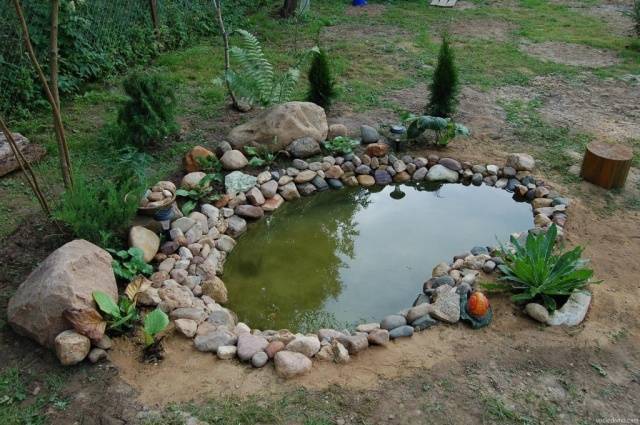
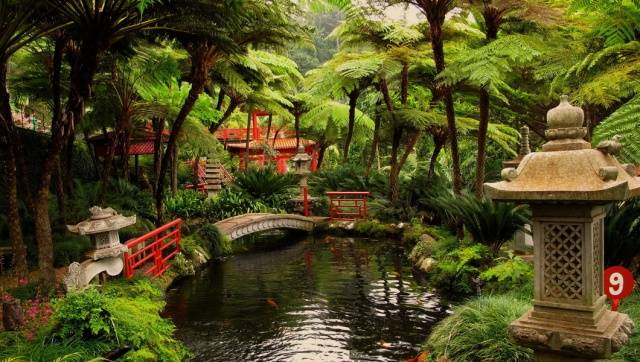
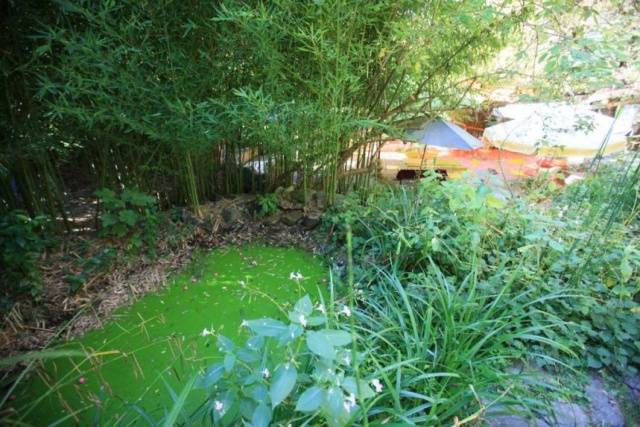

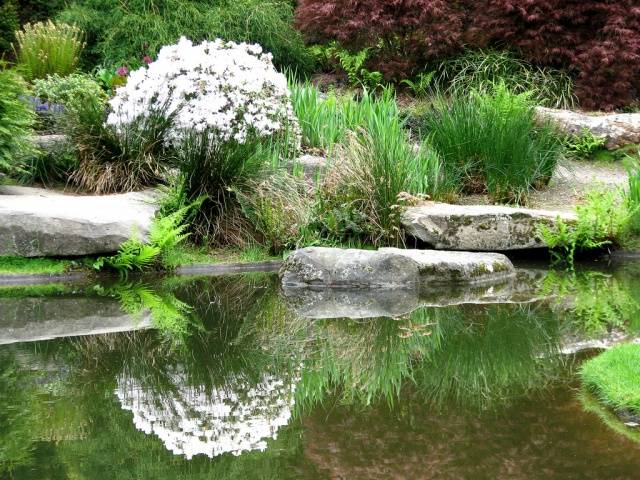
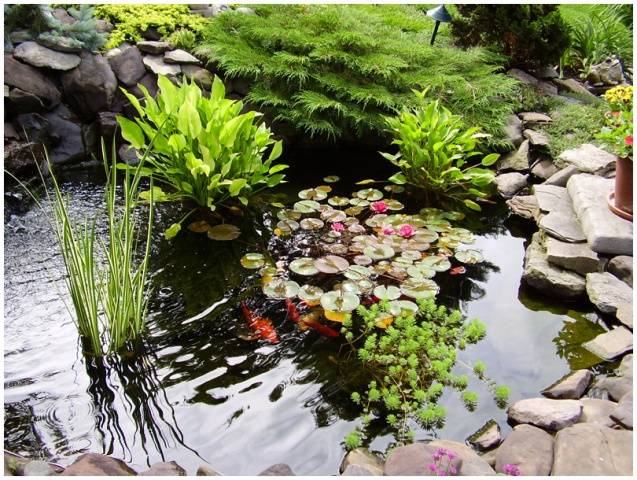
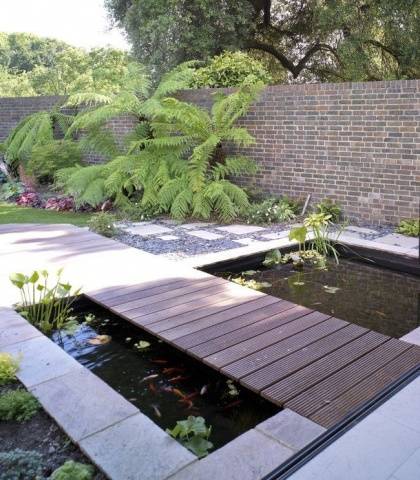
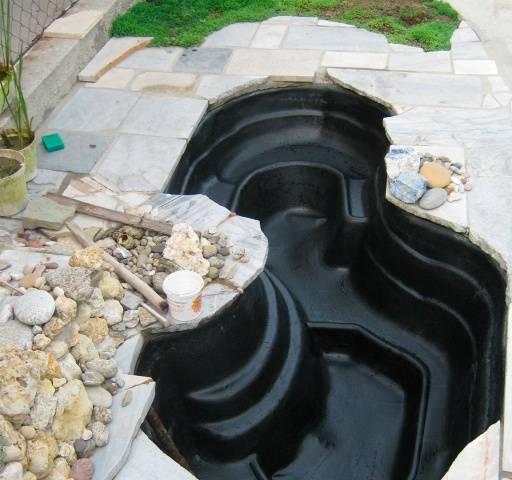
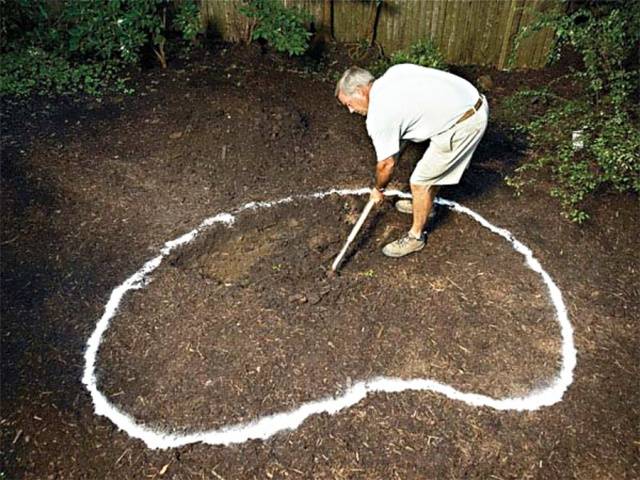
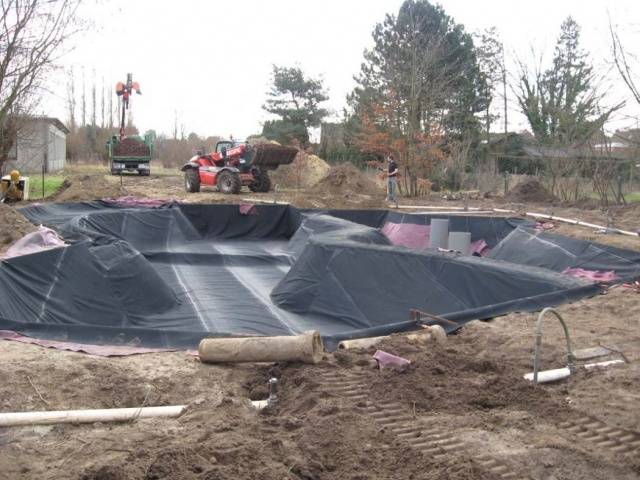
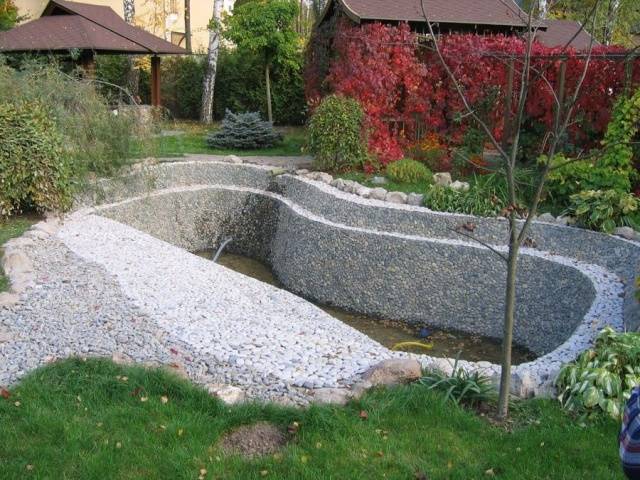
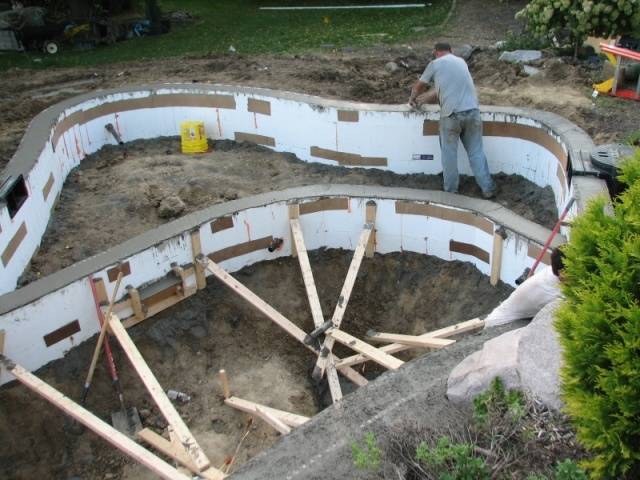
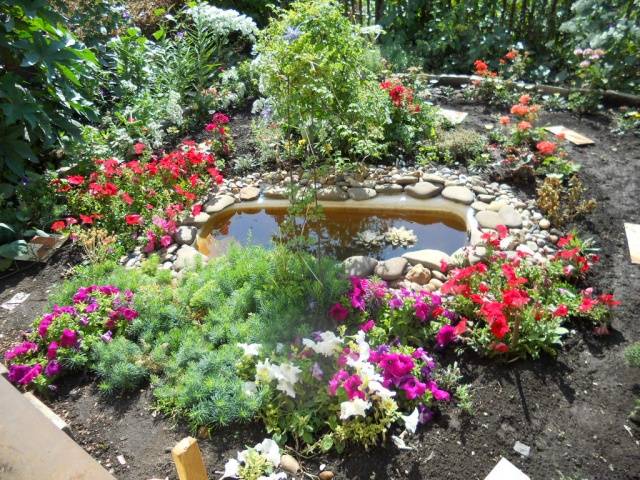

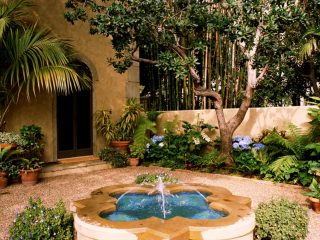

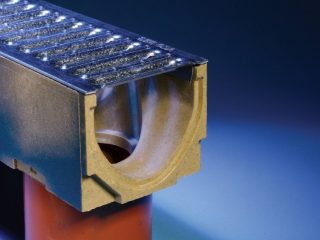
Thanks for the stuff! Many interesting garden ideas